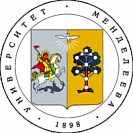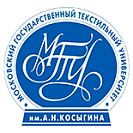Light industry
Light industry has a rather unfortunate history in Russia. It had never been a priority in the Soviet era, while in the 1990s, production volumes dropped fivefold. Although the sector is still very backward in terms of productivity, it has seen slight recovery owing to the emergence of small niche companies producing clothes, footwear and accessories. In the future, some of them are likely to achieve considerable success, having learned to predict global fashion trends and mastered advanced management techniques.
What trends will drive the development of the industry in the coming years?
Natural fabrics, such as linen, cotton, viscose and others, are growing more expensive and are therefore being replaced with advanced synthetic materials. Demand is rising for high-tech smart fabrics (self-cleaning, fluorescent, or those that accumulate solar energy). Spaniard Manel Torres has invented a spray-on fabric, which is sprayed over the body from a can. Italian designer Mauro Taliani made a shirt with “shape memory”, which changes sleeve length depending on the weather and the wearer’s body temperature. Clothing items are often fused with wearable gadgets, from snowboarder jackets with built-in radios to T-shirts with displays and mp3 players. The future will also have demand for fabrics made of custom-grown natural materials with preset properties, such as special GMO linen for crease-resistant fabrics.
Another trend is the personalization of clothes and development of small-scale production. Custom online tailors and stores are also appearing where a user can choose the color of a shirt or jeans, or have a shirt made to a specific order, after choosing the material and design and submitting their measurements. Development does not stop here. As 3D printing is growing cheaper, a 3D printer will appear in almost every home in the foreseeable future. After downloading a drawing from the Internet, you can print out a smartphone case or a plastic souvenir. Professional designers even create entire clothing and footwear collections using this technology. With increasingly cheaper production processes, intellectual property will be of the highest value, with fashion-obsessed people chasing the latest 3D drawings. To get new clothes, you will only have to visit the website of your favourite brand or designer, buy a cartridge with the necessary material, and download the 3D model of the dress you like. Then you can take the model to the nearest automated tailor shop, upload it into a decoding terminal, and adjust the future dress to your size in a virtual fitting room. After that, the dress will be made by an automated production line. Prototypes of such devices already exist.
Future clothes will be comfortable and environmentally friendly, creating demand for materials that are the most salubrious (warming, transpiring, disinfecting, etc.) and harmless for the environment (biodegradable or energy accumulating). In 2013, the London designer Shamees Aden presented a prototype of regenerating sneakers made of a biomaterial resembling a second skin. After wearing, the sneakers can be restored in a special solution. Additionally, technologies will be needed to recycle 3D printed clothes back into material for cartridges, as people quickly grow bored of clothes but consider throwing them out as wasteful.
Mass production will also be automated: even now designers model clothes using graphic processors (such as Virtual Fashion Professional), with special machines cutting the patterns. Apart from that, clothes manufacturers are looking for solutions to reduce waste during cutting.
Life rushing on, and an increasing number of buyers are giving preference to online shopping, which means clothes producers will have to learn to sell them via the Internet. Some Russian brands are successfully positioning themselves in the online market such as the basic clothing brand “Oh, My”, which targets those who want to buy simple clothes, such as single-tone T-shirts, vests or socks. Some online stores offer users virtual fitting rooms, which can at least help shoppers choose the right design. However, most of these fitting rooms only work with 2D images, which cannot provide a clear vision of how a thing will fit. Still, you can get a full 3D scanning of your body within 12 seconds with the help of the special Shapify Booth. The technology will soon be available to everybody, and we will build 3D models of our bodies, with special software calculating whether clothes will fit well.
Professions
Clothes 3d model programmer
IT specialist tasked with translating the designer’s clothing sketches into instructions for a robot or 3D printer. In the future, users will be able to use them to print their own clothes, or have them made by an automated tailor shop.
Trends
Professional skills and abilities
Clothes recycling specialist
Professional with knowledge in ecology and materials science, developing optimal methods for recycling and re-use of old clothes.
Trends
Professional skills and abilities
Healthy clothes expert
Controls clothes manufacturing in terms of safety and health benefits (heat insulation, ventilation, etc.) and designs medical clothes, such as fabrics treated with a disinfectant.
Trends
Professional skills and abilities
Advanced fabrics designer
Specialist engaged in designing new synthetic fabrics and materials with preset properties (e.g. LED or shape memory fabrics).
Trends
Professional skills and abilities
Techno-stylist
Specialist at the crossroads of design and IT, combining clothes with wearable gadgets as decorations or for specific purposes. For example, there are hug shirts, equipped with special sensors: if you hug yourself, they transmit this information to a smartphone, and a person with the “twin” shirt will feel your virtual hug.
Trends
Professional skills and abilities
IT interface designer for light industry
Specialist developing software for designing 3D clothes, patterns, and virtual fitting rooms.

































